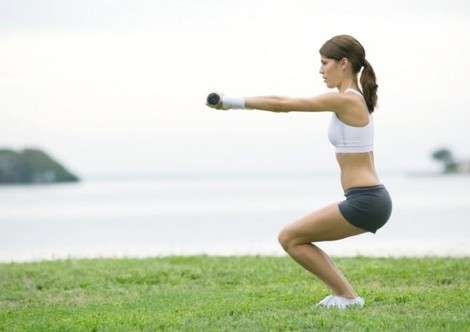The 4 Movements You Need to Master Before You Hit the Gym
By: Q by Equinox for DETAILS


It's amazing what too much time sitting at a desk or on a couch can do. And by amazing, we mean horrible: Weak glutes, poor posture, a powerless core, and tight hips and hamstrings are just some of the consequences. "You bring those imbalances and weaknesses into the gym and start doing even the most basic movements incorrectly as a result," says Florian Roth, a Tier 3 trainer and performance coach at Equinox Soho. Add resistance into the mix, and while you may think you're getting stronger, you're actually putting yourself at risk of injury, he says. "You must first master the following four movements, using proper form, and then allow them to serve as the building blocks from which you can safely advance your training."
1. THE MOVEMENT: PULL
Do: Keep your shoulders down, your chest out, and your chin up. "Most people, especially those who work in an office all day, tend to have a weakened posterior chain, which causes your shoulders to roll forward," says Roth. "Properly executed pull exercises (rows, flyes, etc.) work to counteract this effect by strengthening your back. For this reason, you should routinely perform three pull moves for every one push exercise you do."
Don't: Let your shoulders be in a constant shrugged-up position. The movement should come from your back-not your traps, says Roth. Otherwise, you'll develop a huge neck.
2. THE MOVEMENT: PUSH
Do: "Apply everything you learned in the pull to the push movement," says Roth. Again, keep your shoulders back and down, your chest out, and chin up. Start by doing some push-up variations that will engage your entire body, really strengthen your core, and do not involve any added resistance.
Don't: Work on your push movement until you master your pull. "Any form issues or imbalances that you notice with the pull are going to be present in the push as well, and it's harder on your back so you need to build up some strength before you jump right in," says Roth.
3. THE MOVEMENT: SQUAT
Do: "Roll a toddler a ball and watch him pick it up-that's how you should squat," says Roth. How low you go is individually specific, but you bend straight down from the knees, keeping your upper body tall, core engaged, shoulders back and chest up, moving in one fluid motion, and then use your glutes to stand back up.
Don't: Push through any kind of knee pain. "It's usually an indicator that you're doing something wrong, so as soon as you feel anything bad, stop," he says.
4. THE MOVEMENT: DEADLIFT
Do: Hinge from your hips, with your shoulders down, core engaged, and spine long and neutral, says Roth.
Don't: Bend forward from your knees or allow your core and shoulders to collapse inward. Steer clear of adding big weights on until you can look in the mirror and see that you're following good form first.
More from DETAILS:
Foods That Will Make You Look Younger
5 Weird Signs You're Vitamin Deficient
7 Childhood Actors Who Made It Big
5 Common Cold and Flu Facts & Myths
14 Healthiest Snack Foods You Can Buy
5 Surprising Facts About Sleep
